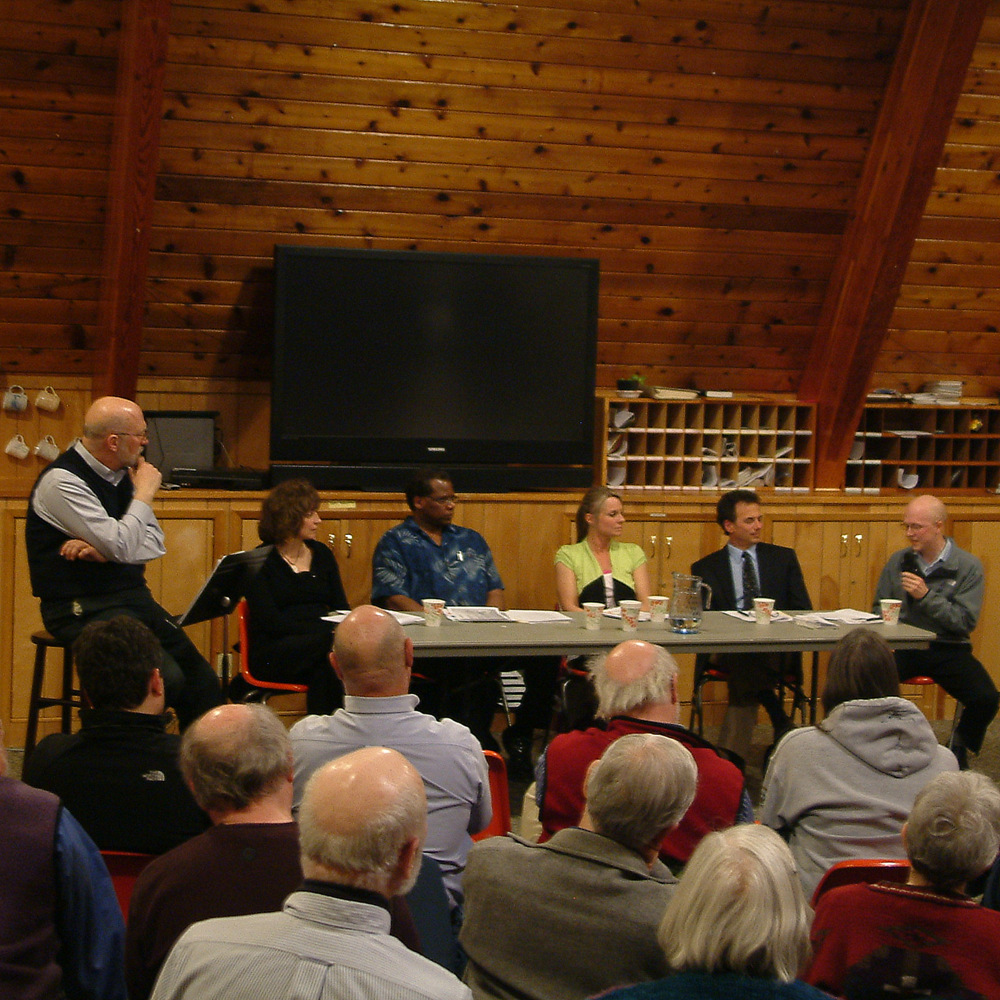
Another community discussion on justice and corrections in Juneau that is planned for Monday, May 13th will focus on restorative justice and criminalizing disabilities.
The first session that was held on April 22nd focused on one of the biggest issues facing the criminal justice system in Alaska, recividism or the continuous cycle of offenders reoffending and going back to prison.
“Sixty-five to seventy percent. Within three years, two out of three people are going to be coming back,” said retired Alaska Supreme Court Justice Walter Carpeneti, who moderated the discussion on recividism.
Carpeneti said the United States leads all countries in percentage of those incarcerated while Alaska is in top half of all states. The annual cost in Alaska is about $250 million which does not include construction of new prisons. Longer sentences and presumptive sentencing schemes add to the prison population.
This state of affairs that we are just spending a huge amount of moeny and we are putting incredibly large numbers of people in jail has brought home the idea: ‘Can we continue this?’ And we probably can’t.”
Evidence-based practices, or studying and implementing policies based on what has already worked – sometimes called smart justice – is becoming the trend, rather than just locking people up and throwing away the key.
Michelle Frederico, client services director at Gastineau Human Services and co-chair of the recently formed Juneau Reentry Coalition, said existing barriers to reentry include the collateral consequences of incarceration. Top at the list is housing followed by employment, education, accessing treatment and medical care, and substance abuse and mental health treatment.
Folks with felonies have a very difficult time getting jobs where there’s health insurance available. Folks suffer for a very long time with untreated medical issues that kind of undermine their recovery in terms of substance abuse.”
Michael Hutcherson is a former correctional officer in Hawaii. But he’s been a long-time employee with the Alaska Department of Labor at the Juneau Job Center. He said he’s also worked with at-risk youth and those at the Johnson Youth Center. Hutcherson believes that there’s no more risk with ex-offender than any other person walking along the street.
“In some cases, the risk is minimized,” said Hutcherson. He notes that many ex-offenders seeking work have already gone through a number of education programs and must keep their job in order to stay out of prison.
If you catch them at the right time, they are an excellent risk.”
Hutcherson said the Department of Labor has a bonding program that helps any reduce any risk for employers. They may also be eligible for $2400 tax credit or state subsidized wages for an on-the-job training program for ex-offenders.
We try to get employers to understand and identify more or less the skills needed to do the job and not so much looking at the person’s record.”
Carmen Marano was convicted of two felonies related to a substance abuse problem and was in Lemon Creek Correctional Center for a year. The turning point came at the Residential Substance Abuse Program (RSAP), a nine-month treatment program at Hiland Mountain Correctional Center that includes regular group meetings and partial segregation from the rest of the prison population. Ankle monitoring and regular meetings with her probation officer helped provide some of the structure that she felt she needed once she got out.
Marano said “having a solid recovery plan, employment, and housing” were essential for her to stay out of prison.
She said she applied for jobs with the CBJ and the State of Alaska, but they looked at her record and did not want to have anything to do with her.
District Court Judge Keith Levy helped get the first Therapeutic Court for Juneau underway. That’s a non-adversarial 18-month diversion program for those charged with drunk driving offenses.
Levy’s now starting the Coordinated Resources Project that is essentially a therapeutic court for those misdemeanor offenders who need mental health treatment.
The other principles are the same. It’s a team. It’s managed by a team. It’s a remarkable thing to sit in a room with the judge and lawyers from both sides and have them talking about really — not how to get their way, but really — what’s best for this person and what’s going to motivate them to change.”
Levy said he’s seen people change dramatically over 18-months of their participation in the Therapeutic Court.
Representative Jonathon Kreiss-Tomkins of Sitka – based on his experience so far and what he has inferred from veteran lawmakers – said that there has been a positive shift away from corrections simply as a punitive measure.
It’s viewed more through an economic lens because — you may have heard– the state is not doing so well economically.”
Kreiss-Tomkins said there’s nothing like an economic imperative to inspire a moral imperative. He said there’s an “unholy alliance” made up of libertarians and far left lawmakers who are considering drafting policy proposals that are based on smart justice.
The April panel on reversing recividism rates was organized by Juneau People for Peace and Justice.
May 13th’s segment starts at 7 p.m. at Northern Light United Church.
A Juneau attorney will address the criminalization of disabilities and a representative Whitehorse will talk about traditional indigenous-based methods on repairing the harm from an offense.
